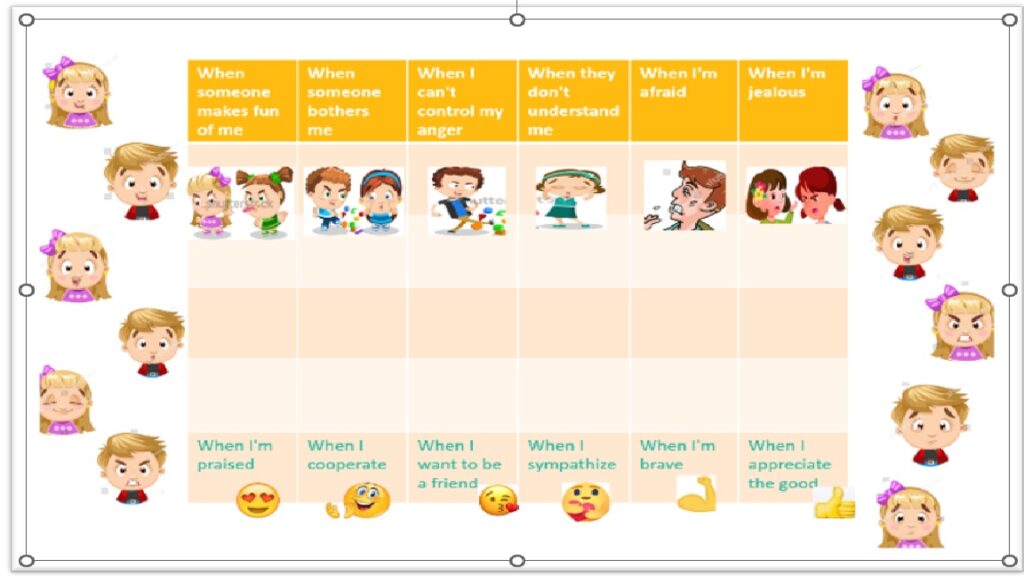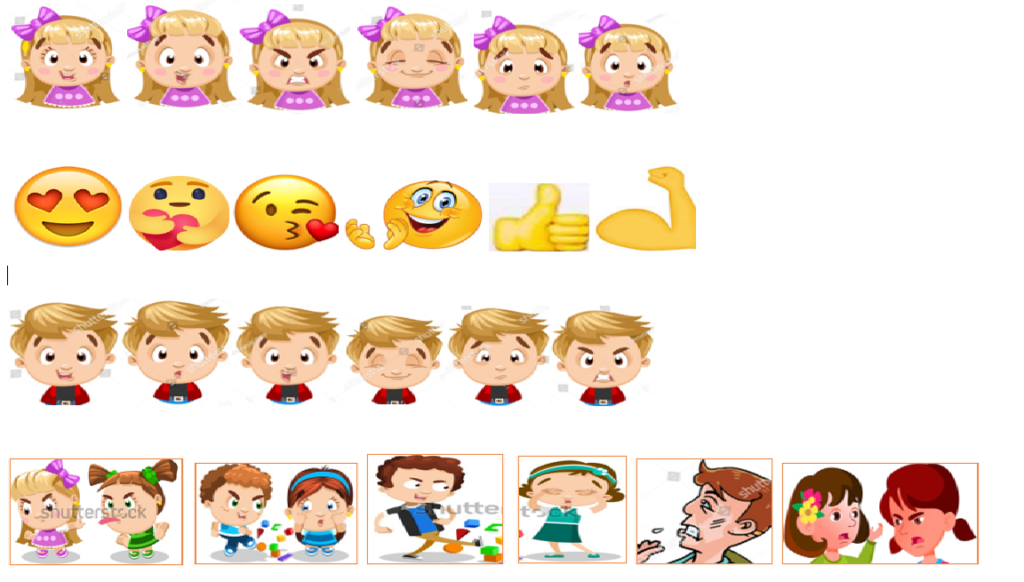Teacher’s name: L. Minkova – 66 Preschool and kindergarten “ Elitsa” – Pancharevo
- Title of the game : In the Field/Labirinth,Maze/ of the feelings
- General aim of the game:
- Students recognize, realize and apply their own feelings by placing themselves in a specific problem situation. The child reaches the solution of the given situation supported by classmates in the shortest positive way by using the appropriate emoticons.
- Age range addressed: up to 9 years old.
- Robot that can be used for this game: SUPER DOC, DOC, MIND Clementoni robots
- Link to the game instructions and game-boards to be printed:

Description of the board:
The playing board is a table with six horizontal pictures depicting the following anxiety states: “When someone makes fun of me”; “When someone interferes with me”; “When I can’t control my anger”; “When they don’t understand me”;”When I’m afraid”;”When I’m envious”. At the bottom of the table are the positive emotions: “When I am praised”; “When I help”; “When I to be a friend”; “When I sympathize”; “When I am brave”; “When I value/respect/ the good”, and between the two extreme emotions there are three empty links.
Other useful materials: Actions and emotions that lead to positive transformation can be written on a separate board. They can help students when they have difficulty naming or deciding.

Phases of the game:
1.Preparation:
In a short teacher’s speech, students are encouraged to talk about their experiences, to name their feelings. The teacher encourages thinking about the feelings of others and anticipating what states they lead us to.
2.Start of the game:
The robot is placed on one of the topmost fields, showing a negative emotion. The student must move to the desired cell, and with each movement of the Robot, the student utters an action or transformation feeling that will lead to the desired emotion.
3. Core phase of the Game
Each participant plays, according to the order determined by the group, independently with as many moves as he wants and to the feeling he considers his own. The other participants watch for their turn.
The game has no right or wrong move. The important thing is for students to consider how to get out of a situation and what the path to another mood should be.
4. Conclusion:
The student verbalizes its feelings and visualizes them in a path of emotion and looks for a solution on how to deal with his emotional state and reach its positive reflection.
Variants
Emotional states can express another range of feelings.